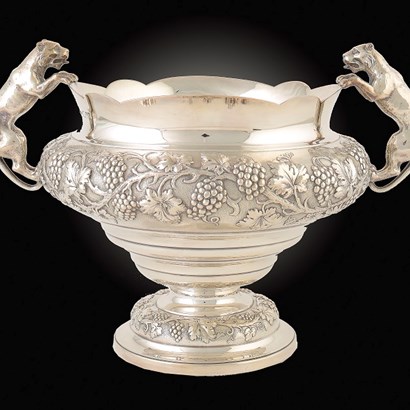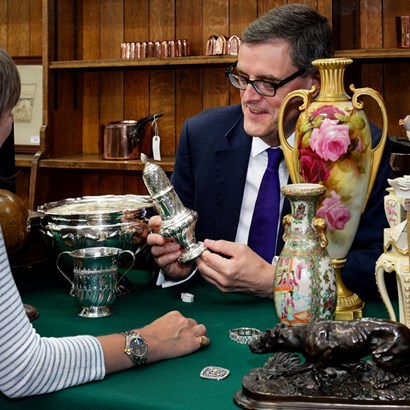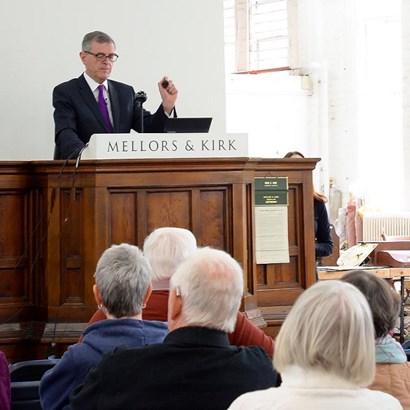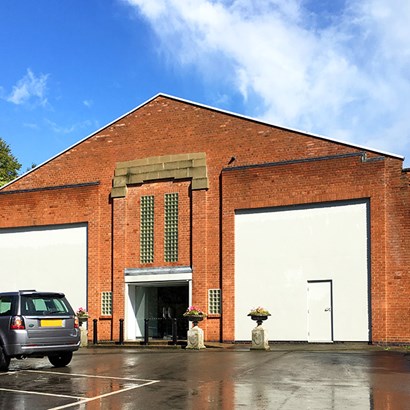Auction Insights
November Auction Highlights
One of the smallest things made one of the highest prices at The Auction House last week when a tiny drawing by Graham Sutherland was knocked down for £48,000.
Estimated at only £3,000-5,000 several determined bidders drove the price to an unprecedented level for such an early work by the artist. Dating from about 1925, the drawing of Oast Houses was rare because after World War Two Sutherland destroyed practically all of his early work, such as this example. Graham Sutherland (1903-1980) is perhaps best known as the artist whose portrait of Winston Churchill was secretly destroyed by Clementine, Lady Churchill shortly after the couple were presented with the picture.
The recent unrelated deaths of three widows of men who achieved great success in politics and business resulted in a wonderful crop of fine art, jewels, furniture and porcelain, all of which made high prices last week. Their foibles and collections can tell us much about what makes such figures ‘tick’. Ernest Marples (1907-1978) was a maverick, self-made man who as MP and later cabinet minister in the early 1960s introduced Premium Bonds and Post Codes. He also had a liking for some of the finest early English Delftware, buying at Sotheby’s several plates and dishes that 60 years later performed strongly. A plate that was dated 1740 went for £1,100 against an estimate of £700-900 and another, charmingly painted with a lady rocking a cradle and dated 1754 made £1,800 against an estimate of £1,000-1,500. Appropriately, a pair of Bristol Delftware plates commemorating a crooked 18th century MP, Thomas Cresswell made £3,500. Bargain of the Sale must have been the model diesel locomotive presented to Marples when Minister of Trade by the apprentices of Derby Locomotive Works in 1964. It went for £170.
Another item that was surely inexpensive was the magnificent Nottingham lace panel which recently featured in Under the Hammer. Exhibited in Vienna in 1873 by Simon, May & Co I suggested there would be no more fitting home than Nottingham Castle, following its costly refurbishment. That seems to have fallen on deaf ears and it has now left Nottingham, possibly forever, selling for just over the estimate at £950. But bargains were seldom to be had. The gorgeous little gold and gem set scarecrow brooch that was also featured in Under the Hammer was found by the teenage bell boy of the Olde Bell Inn, near Retford in the 1930s. I predicted it would make £800-1,200 although gave it a more cautious estimate to allow for the small hole with which it had been drilled, presumably for a safety chain. On the day this symbol of some unknown lover’s passion sold for a highly pleasing £1,900.
The pictures and furniture of the late Constance Travis, whose late husband was a director of Travis Perkins, were much admired. She was evidently a keen gardener judging by her penchant for flower paintings. The work of the two best 20th century British still life artists – Cecil Kennedy and Harold Clayton were amongst her lots, the canvases selling for £7,500 and £5,000.
The third widow’s husband was a Derbyshire businessman who bought some superb examples of Georgian mahogany furniture in the 1960s. He would have been unaware that an unusual 18th century bookcase made of amboyna and other exotic specimen timbers was very special. Researched by Mellors & Kirk, it was discovered to be a hitherto unrecorded example from a series made for one of the greatest of all British collectors on the grand scale, Charles Rogers, FRS (1711-1784). His other surviving examples and part of his extraordinary collection of just about everything, from minerals to books, Old Masters to manuscripts, is in Plymouth City Museum & Art Gallery. Happily the Museum were successful at the Sale, paying a hammer price of £6,000 which means this historically important piece of classic English furniture will be heading to Devon and be displayed in a gallery dedicated to the collection. It is such a shame that Nottingham didn’t acquire for the lace panel that in its own way was just as important – but that’s auctions for you, sometimes you only get one chance.
On a brighter note a newly discovered Nottingham saltglazed brown stoneware mug went for an over-estimate £1,100. Made at the Beck Barns pottery it was incised with the name of the man for whom it was made William Bennit (there was no predictive text in those days!) on June 24th 1767.
Finally my pick of the whole Sale was a huge 1956 colour linocut of Brighton Pier by one of the most gifted and original British artists of the mid 20th century, Edward Bawden (1903-1989). The local owner’s parents had been left it by Dr Eric Strauss a leading London psychiatrist who died in 1961. His patients included Evelyn Waugh, Graham Greene and Ian Fleming. Imagine what secrets he would have heard! Ian Fleming, creator of James Bond, once wrote to the good doctor to thank him for giving him the idea for the character Drax, “a perfectly horrible man” that Fleming was about to introduce to his public in ‘Moonraker’. The estimate of £5,000-10,000 was topped when the linocut sold to an online bidder for £11,000.
< Back to Auction Insights



